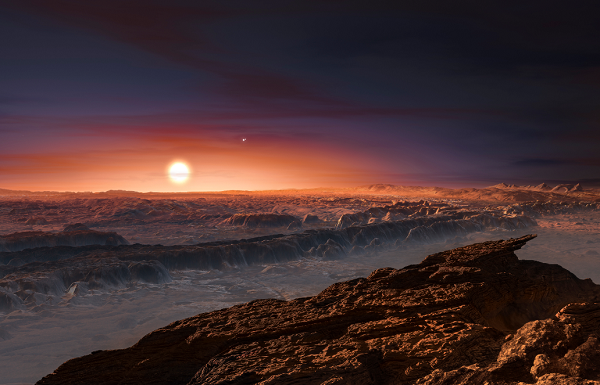Scientist Says Alien Life ‘Inevitable And Possibly Imminent’ With Billions Of Habitable Planets

There are 500 habitable planets in the Milky Way galaxy, according to astrobiologists, wherein life could exist.
These planets are located in the habitable zone, also known as the Goldilocks Zone, that is not too near or too far from the local star like the Earth is from the Sun, so liquid water could exist there.
Since the beginning of civilization, people have been wondering whether we are alone in the universe or there is intelligent life somewhere else. With the abundance of habitable planets in the universe, the idea of extraterrestrial (ET) life is not as farfetched as it used to be.
The Chemistry of Life
All organisms are mainly composed of important elements that support life: carbon, hydrogen, oxygen and so on. These elements responsible for the biochemistry and organic chemistry are abundant in the universe.
Amino acids, on the other hand, are complex molecules that support life processes. They act as enzymes to help us digest food, provide structural support and fuel other metabolic processes. Amino acids were reportedly found in the tails of comets and Martian soil.
Liquid water could also exist in the habitable planets. Water is one of the most important solvents for life to exist.
Based on this catalog, astronomers from the University of California, Berkeley worked out that there could be as many as 40 billion Earth-sized exoplanets in the so-called “habitable zone” around their stars, as reported by The Conversation.
One of these Earth-like planets is found orbiting the star of Proxima Centauri, a system that is four light-years away.
Life Could Exist in Extremes
The Dead Sea was named thus because people think no lifeform could exist in the body of water because of its salty environment. That is, until scientists discovered that there are microorganisms that could resist and live in extremely salty environments called halophiles.
On Earth, life could exist in an environment that seems odd for life to be found. There are bacteria that could live in extreme heat like a near volcano. Microorganisms are also found in highly acidic places.
If these microorganisms were able to survive in such conditions, the probability of life existing in an extreme environment like outer space is high.
Mars Was Once Habitable Planet
Astrobiologists said that Mars was once a warm planet and liquid water existed on its ground. Mars today has liquid water under its surface. This gives us an idea that Mars was once warm and wet and was probably fertile ground for life before the Earth.
Scientists hope to uncover Martian lifeforms as soon as 2021 when the ExoMars rover Rosalind Franklin will hunt for them with a two-meter drill.
“In 2017, specialists in sea ice from the University of Tasmania concluded that some Antarctic microbes could feasibly survive on these worlds. Both Europa and Enceladus have undersea hydrothermal vents, just like those on Earth where life may have originated,” Cathal D. O'Connell, researcher and centre manager at St. Vincent's Hospital, University of Melbourne, reported on The Conversation.
Common Machinery
Based on the genetic and evolutionary shreds of evidence, all life on Earth is related and descended from a single cell organism that existed 4 billion years ago. From the smallest bacteria down to the complex organisms, all of us share the same basic molecular machinery: DNA that makes RNA, then RNA that synthesize proteins.
We Are Not Alone
The Drake Equation is one of astronomy’s most famous attempts to answer the question: are we alone?
With the planned launch of James Webb Space Telescope in 2021, scientists will be able to take measurements for some of the Earth-like planets. Space-based telescopes will take pictures of these planets directly.
The color and the variability of that point of light to be gathered by these telescopes will give us an idea of the length of the planet’s day, if it has seasons, clouds and oceans, and possibly even tell the color of its plants.
© Copyright IBTimes 2025. All rights reserved.





















